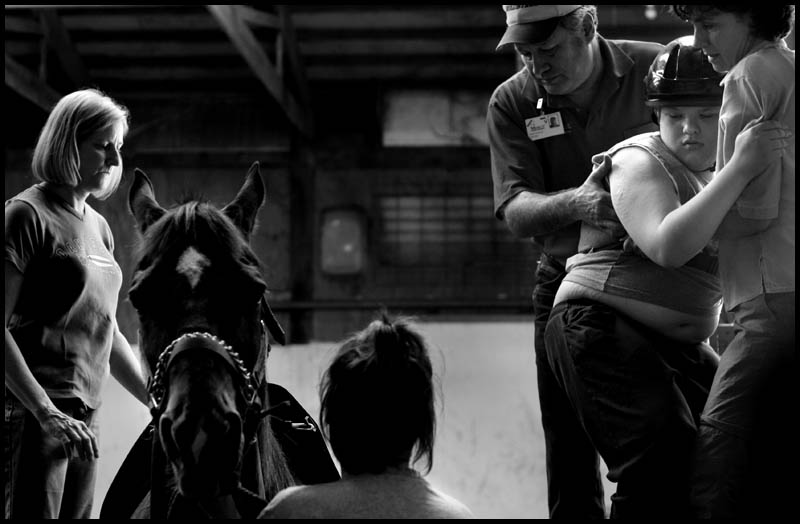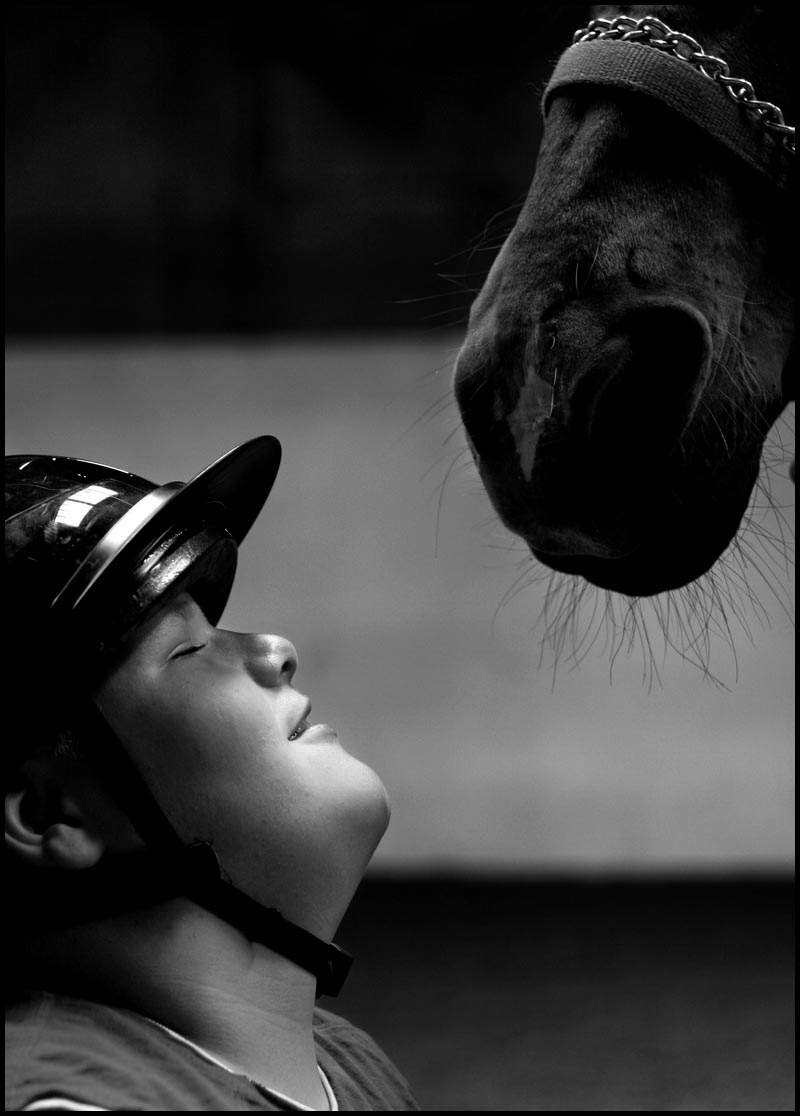Each week Kyle Krohn rolls his wheel chair into the Stepping Stone riding facility and comes face to face with one of the greatest challenges in his fight against Cerebral Palsy, getting on a horse. Every week for ten weeks he has faced this challenge and met it with perseverance and determination.
Kyle is a participant in the Hippotherapy Program put on by St. Vincent Mercy Children's Hospital out of Toledo, OH. Each week a physical therapist and occupational therapist come up from Toledo and hold sessions at the Stepping Stone riding facility in Frenchtown Township in Monroe. Hippotherapy, which comes from the Greek word "hippos" meaning horse, uses the movement of the horse to help disabled children facilitate their balance and movement challenges. Unlike traditional therapy involving horses, Hippotherapy does not focus on teaching disabled people to ride horses, but rather uses the horse as a therapeutic tool. The horses walking pattern mimics that of a human's walking pattern, and the side to side movement and starting and stopping of the horse works muscles in the pelvis and legs that a child in a wheelchair would normally never be able to experience under their own power.
Hippotherapy works under the recommendation of a medical doctor prescribing physical or occupational therapy for the patient. After the patient has met with the therapist, a treatment plan is formed and goals are set. Children with cerebral palsy, autism, brain injury, cerebral vascular accident, brachial plexus, neuromuscular disorders or sensory processing dysfunction may benefit from hippotherapy.
When Kyle first started the program, even the idea of having to climb up on a horse was enough to frighten him. Now, ten weeks later, getting back on the horse, is like, well, getting back on the horse. Kyle is able to decide how fast he wants the horse to go and when he wants the horse to stop. Not only has Kyle improved in a physical sense, but the improvements in his abilities strengthen him emotionally as well. "His legs are holding up longer under him and he straightens up in his chair more," said LaVonne Krohn, Kyle's grandmother, "it's amazing the confidence he's getting to try other things and new things, and it's helping him a lot."
Link to Multimedia: HIPPOTHERAPY






1 comment:
Hi,
I love your slideshow and just posted a link to it on my blog at http:www.horseot.blogspot.com
Would it be possible for me to get permission to add some of your hippotherapy photos to my website with links to your site? I love the photos of trunk rotation while side sitting. I would add a short caption about how this position works on trunk strength, motor planning and balance.
Thanks,
Barbara
http:/www.horseot.com
Post a Comment